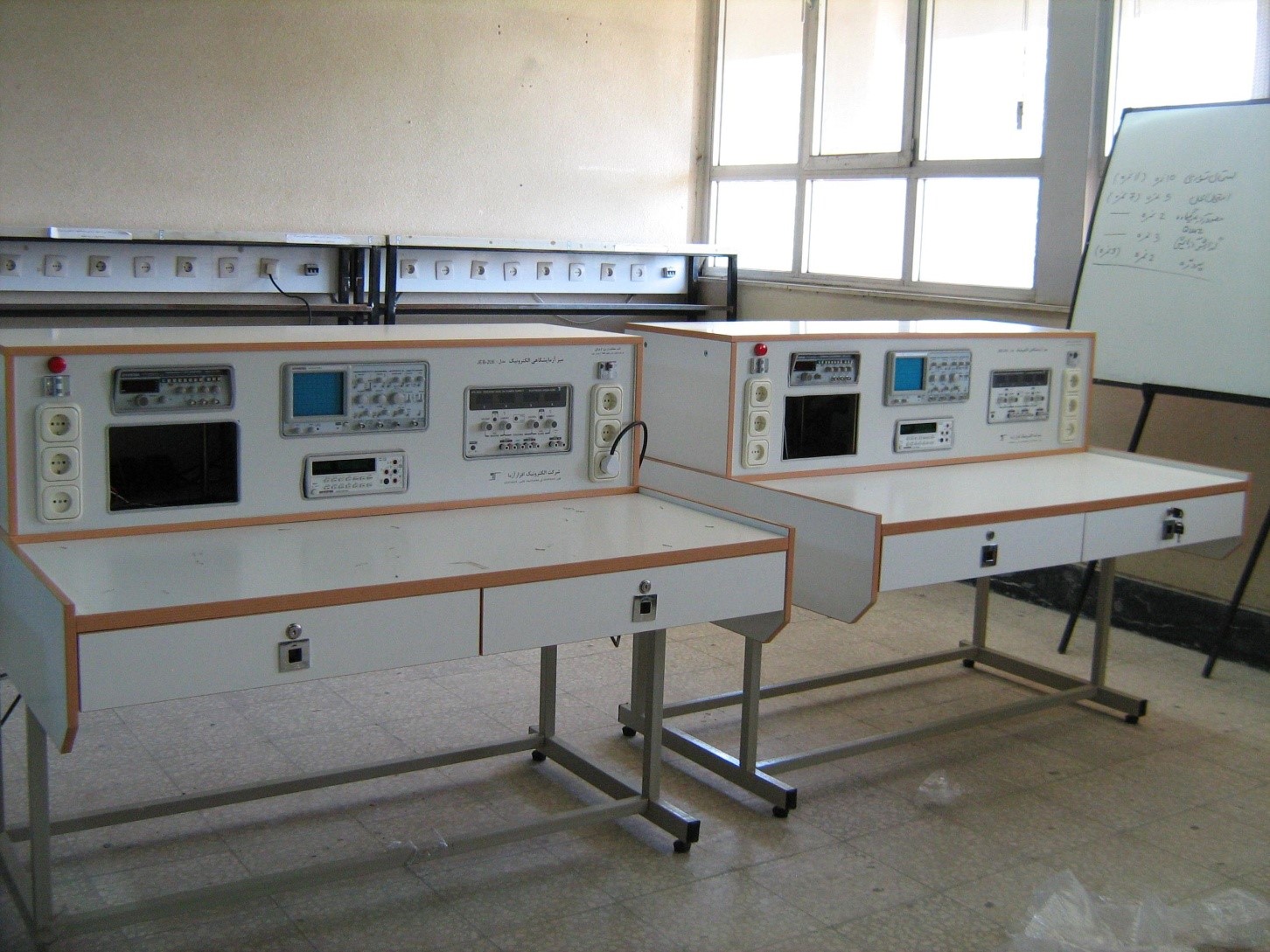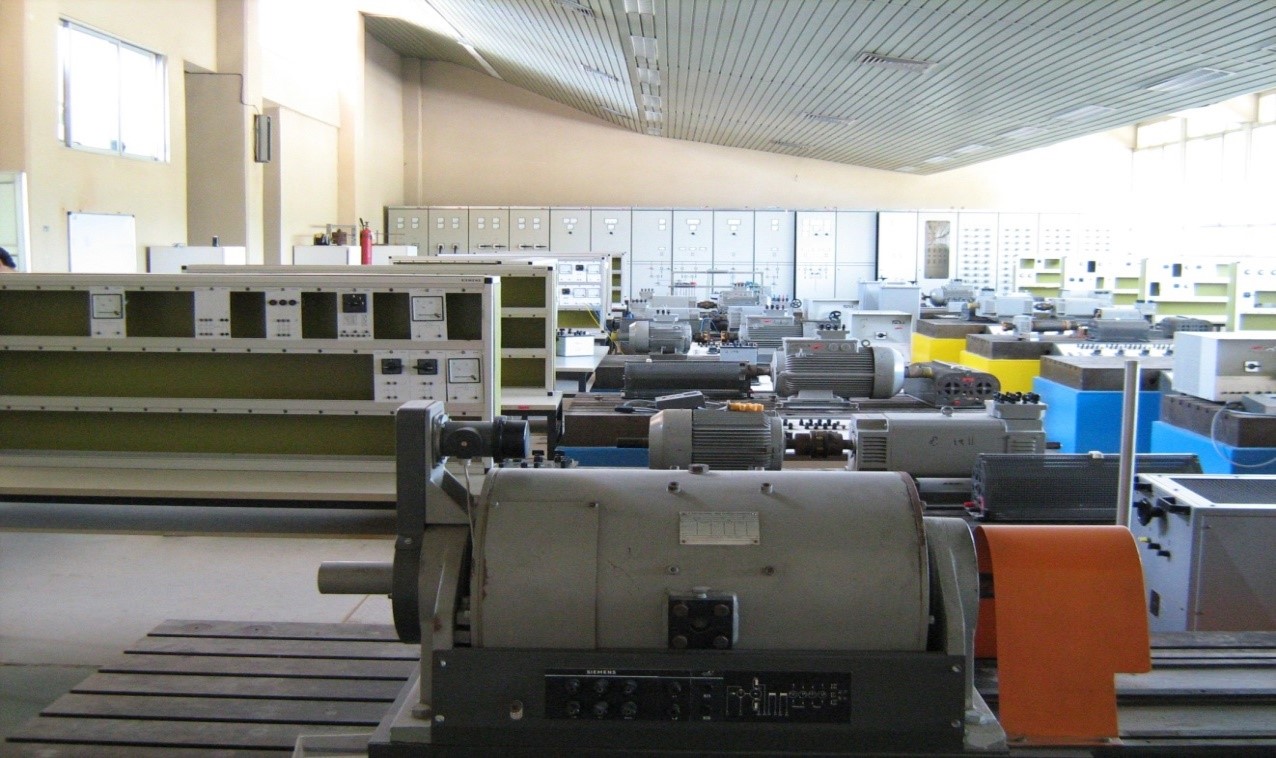Department of Electrical Engineering

About
The Electrical engineering department of Guilan University was first established in 1982 in the faculty of technical Engineering with a focus on electronics, and now it presents undergraduate and graduate programs in electronics, power, control, and telecommunications. This department offers a master’s degree in Electronic integrated circuits, digital electronic systems, power systems, power electronics and electric machines, telecommunication systems, telecommunication fields and waves, and control. Since 2014, the Department of Electrical Engineering at Guilan University is offering a doctorate degree in two branches of power and electronics.Currently, the department has 23 faculty members, consisting of 1 professor, 13 associate professors, 8 assistant professors, and 1 lecturer that they provide scientific services through teaching and research.
The total number of students in this department in the second semester of 2023-2024 is 666. Out of this number, 247 students are in master's and doctorate programs and 419 students are in free and non-free undergraduate courses.
Facilities and Equipment
• Digital laboratory
In This Lab, there are 8 set of equipment for experiments related to the students’ courses and research. These sets consist of Oscilloscope, signal generators, DC power supply and Multimeter.
• Telecommunication circuit laboratory
• Digital Antenna and Telecommunications Laboratory
• Electronics and circuit laboratory
• Laboratory of electric machines
• VHDL lab
• DSP Lab
• FPGA lab
• Microelectronics Laboratory
In this lab, there are instruments such as spectrum Analyzer 3GHz HMS 3010, Digital Oscilloscope, synthesizer 3 GHz HM 8135, Intel Xeon 2.53 GHz server, Intel core i7 2.8 GHz server for students’ research
• Sensor Lab
• Linear control laboratory
• Industrial control laboratory and instrumentation
• Laboratory of computer application in electricity
• Power system laboratory
• Electric Workshop
In This Lab, there are 8 set of equipment for experiments related to the students’ courses and research. These sets consist of Oscilloscope, signal generators, DC power supply and Multimeter.
• Telecommunication circuit laboratory
• Digital Antenna and Telecommunications Laboratory
• Electronics and circuit laboratory
• Laboratory of electric machines
• VHDL lab
• DSP Lab
• FPGA lab
• Microelectronics Laboratory
In this lab, there are instruments such as spectrum Analyzer 3GHz HMS 3010, Digital Oscilloscope, synthesizer 3 GHz HM 8135, Intel Xeon 2.53 GHz server, Intel core i7 2.8 GHz server for students’ research
• Sensor Lab
• Linear control laboratory
• Industrial control laboratory and instrumentation
• Laboratory of computer application in electricity
• Power system laboratory
• Electric Workshop

Digital Laboratory
A paragraph is a self-contained unit of a discourse in writing dealing with a particular point or idea. Paragraphs are usually an expected part of formal writing, used to organize longer prose.
Go Somewhere
Laboratory of Electronic Machines
A paragraph is a self-contained unit of a discourse in writing dealing with a particular point or idea. Paragraphs are usually an expected part of formal writing, used to organize longer prose.
Go Somewhere-
TeachingElectrical engineering is a crucial part of almost every modern system and technology. it has now been subdivided into a wide range of subfields including electronics, digital computers, power engineering, telecommunications, control systems, radio-frequency engineering, signal processing, instrumentation, and microelectronic .
The primary mission of our department is to provide its bright and diligent students with top quality and modern academic education within the electrical engineering and technology domain. Members of our department in various majors of electrical engineering, use different teaching methods such as fieldwork, lectures, seminars, projects and workshops, to prepare the students for this mission.
Another important mission of the department is to perform high-quality theoretical and applied research to advance the state-of-the-art technology solutions. -
ResearchThe members of our department are active researchers in various fields of electrical engineering who have published numerous articles in prestigious international journals and carried out projects related to the industry. With more than 400 graduate students and numerous high quality international papers, the department of Electrical Engineering is one of the university engines of research and innovation.
In the fallowing, some of the research areas of the different research labs of our department are presented:
Research areas of Microelectronics Lab:
Ability to design analog and RF integrated circuits
Design of on-chip power management circuits for battery-free and low-power applications
Designing the reading circuits of capacitive sensors
Design of transmitter-receiver circuits
…
Research areas of DSP Lab:
Non-destructive imaging systems
Eddy current-based next-generation scanning system
industrial imaging and sensing, EIT, based on electrical impedance of materials
Pattern recognition and data processing
semantic processing of video for the purpose of abnormality
detection of camouflage
Tracking at night, supporting the fusion of infrared image information
Improved tracking based on particle filter
Application of compressed sensing in different fields of signal and image processing
Designing a complete inspection of the eddy current system sensor to check the body of nuclear reactors and boilers in power plants
Design and implementation of Steganography systems and message discovery in images
Image guidance system based on image processing
Investigation of image processing algorithm in thermal cameras
Time-frequency analyses
Research areas of Sensor Lab:
Measurement of displacement with a capacitive sensor with nanometer accuracy
Machine olfaction and electronic nose
Design and implementation of high temperature systems
Industrial furnaces
Fabrication and design of resistance gas sensors
Spectral sensor system based on electrical impedance
Research areas of Digital Antenna and Telecommunications Laboratory:
Design and implementation of microwave devices
Waveguide filters in the s and X frequency bands.
Spatial filters in s and X frequency bands
Microstrip filters in s band
Waveguide adapters up to 12 GHz frequency
Microstrip interconnects up to 12 GHz frequency
Design and implementation of directional waveguide coupler with 137% performance improvement
Designing and manufacturing of wideband slot antenna with very high gain
Application of Compact Sensing (CS) in Synthetic Aperture Radar (SAR) -
PublicationAuthorships , scientific and research publications:
Mrs. Dr. Niaraki:- Nano technology of small systems recognition, Gilan University Publications, 2013
Mr. Dr. Afarakhte:
1- Power grid protection and automation guide, Payam Farhang Publications, 2013
https://scholar.google.com/citations?user=A_14_oAAAAAJ&hl=en&oi=ao
Mr. Engineer Zanj:
1- Signals and Systems, Tehran University Publications, 1378
Mr. Dr. Baghersalimi:
1- An introduction to electric circuits, Gilan University Publications
https://scholar.google.com/citations?user=cNXH4oIAAAAJ&hl=en&oi=ao
Mr. Dr. Moghaddis Tafarshi:
1- Sources of electrical energy production in the 21st century
2- Principles of pricing in the electricity market
https://scholar.google.com/citations?user=z4BXhBcAAAAJ&hl=en&oi=ao
Dr. Karami:
1- Basics of Electrical Engineering textbook 2- Gilan University Publications - 1384
https://scholar.google.com/citations?user=Lc0brnAAAAAJ&hl=en&oi=ao
Mrs. Dr. Maghsoodi:
1- Telecommunication Systems, Neda Publications, 1386
2- Handbook of the specialized language of electricity



































